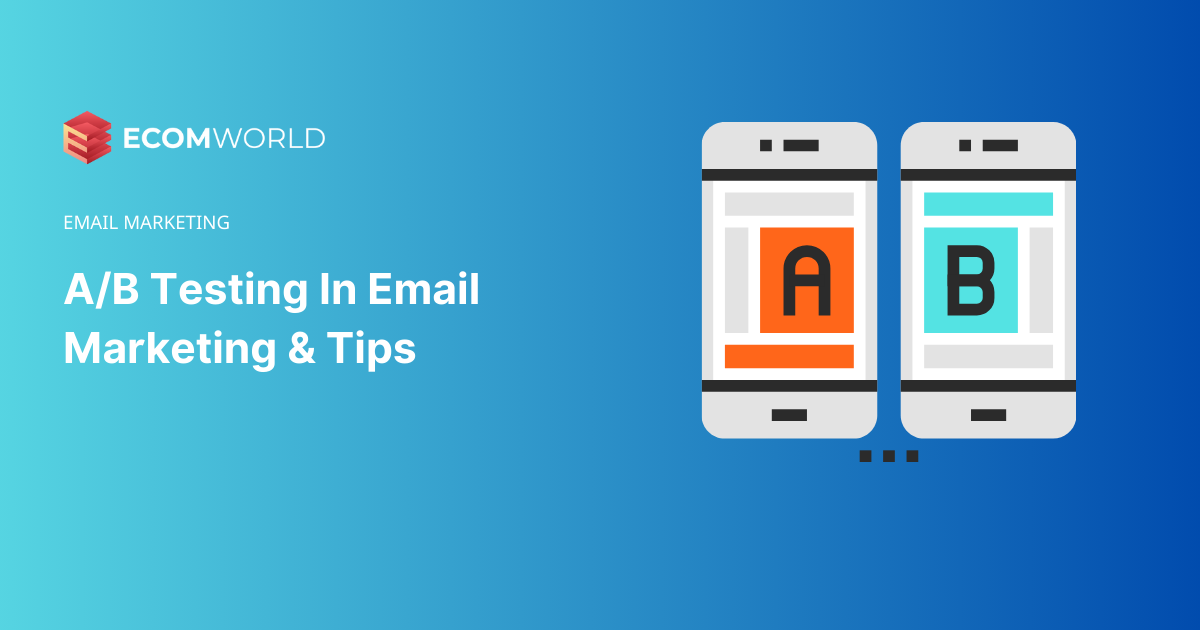What is A/B Testing in Email Marketing?
A/B testing, also known as split testing, is a crucial process in email marketing aimed at refining performance. In this method, two distinct versions of an email are crafted, differing in elements like design, subject lines, call-to-action placement, or send times, depending on the variables being tested.
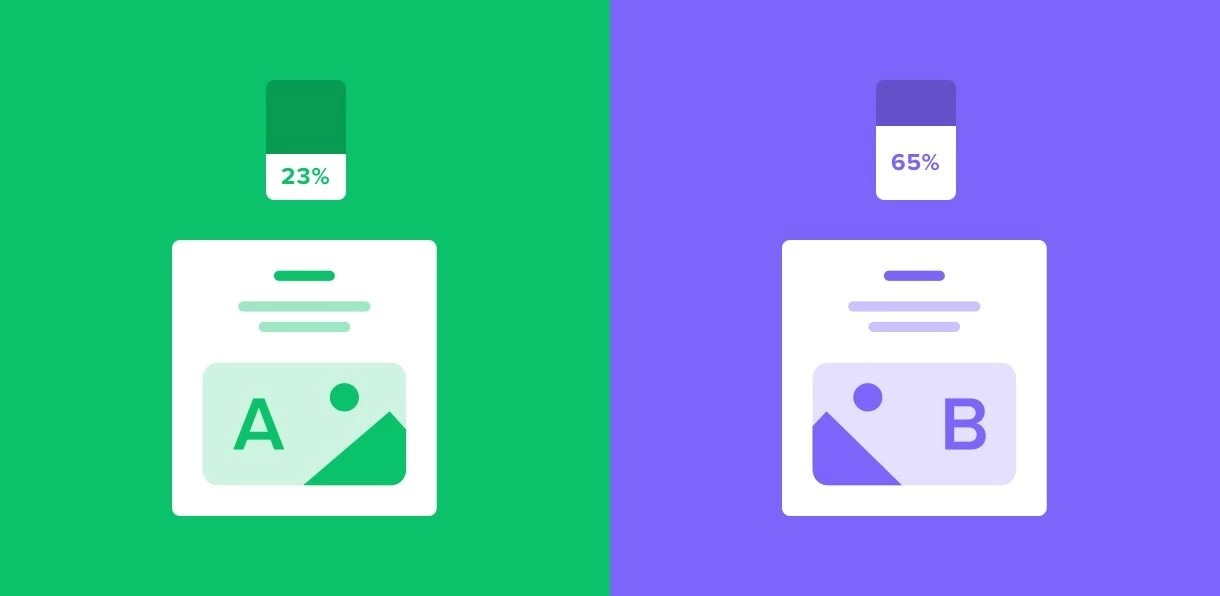
Once these versions are prepared, they’re dispatched to different subsets of your email list. Each email variant engages with recipients, eliciting responses. The performance of these emails is meticulously tracked and analyzed, using key metrics to gauge effectiveness.
While the concept sounds straightforward, it involves a nuanced approach. Much like cultivating a beautiful garden requires more than just planting a few seeds, successful email marketing demands more than simply dispatching a couple of emails. It’s about understanding the subtle art of communication and engagement and continuously adapting strategies to resonate with your audience effectively.
Why do you need to use A/B testing in Email Marketing?
A/B testing is not just a “routine activity” but an essential tool for making informed decisions about your email marketing strategy. It’s also the fastest way to figure out what your audience likes (and optimize your email campaigns accordingly).
- If you change multiple elements across multiple emails, you can’t isolate which changes account for which improvements (or reductions) in performance.
- If you change one element but don’t split the test by comparing it to a control group (randomized recipients from the same list receiving an unchanged email), then you won’t know whether a shift in performance can really be attributed to the change in your email.
Tips for setting up an A/B email test

What Can You A/B Test?
Subject Line
Subject lines are pivotal in email marketing. They serve as the first impression, enticing recipients to open the email. The beauty of subject lines, as you pointed out, lies in their flexibility. Here’s why they are often the focal point of testing for email marketers:
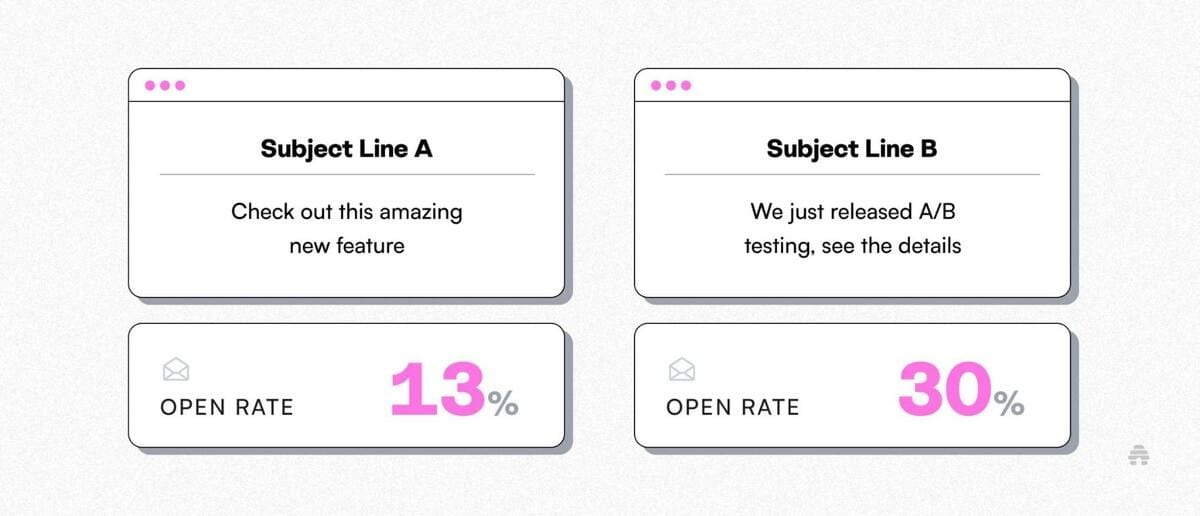
- Immediate Impact: Subject lines are the first thing recipients see. A captivating subject line can significantly increase the open rate of an email.
- Easy Modification: Unlike the body content or design, subject lines are concise and easy to change. This makes them ideal for quick and frequent testing.
- Creative Space: Marketers often have a multitude of creative ideas for subject lines. Testing allows them to explore which one resonates best with their audience.
- Segmented Testing: Marketers can test different subject lines on various segments of their audience, ensuring a tailored approach for different subscriber groups.
- Direct Influence: Subject lines directly influence the open rate, providing clear and immediate feedback on the effectiveness of the test variations.
By experimenting with different wording, lengths, tones, and personalization levels in subject lines, marketers can gain valuable insights into what captures their audience’s attention, leading to more effective email campaigns.
Preview Text
Your preview text is the optional additional line of text that follows your subject line. This means it performs the same job as your subject line and is also a great candidate for A/B testing.

When experimenting with various versions of your preview text, similar to testing different iterations of your subject lines, the primary metric to monitor is your open rate.
Sender Name
Your sender name is what appears in your subscribers’ inbox to indicate who sent the email. Many brands opt for their brand name as the sender name, such as ‘VINCUSTOM.’ However, some businesses inject personality by including an individual’s name, like ‘Jade from VINCUSTOM.’
Consider experimenting with different sender name variations in your future email campaigns. You could try using a specific team member’s name, like ‘Customer Support at VINCUSTOM,’ or a department, like ‘VINCUSTOM Sales Team.’ If you decide to conduct this type of A/B test, keep a close eye on your open rate to gauge subscriber engagement.
Send Time
It’s common for email marketers to fall into the habit of always sending their campaigns at the same time of day and the same day of the week. However, when you send your emails, it can have a major impact on your open rate.
To really know when the best day to send emails to your customers is, you should run some A/B tests where you vary the day of the week (e.g., Tuesday vs. Thursday). You can also do the same with the time of day (morning vs. afternoon).
Again, the main metric you’ll want to look at here is your open rate.
Email Lenght
The optimal length of email subject lines is a contentious topic in email marketing. According to a recent study by Return Path, the ideal length falls between 61 and 70 characters.
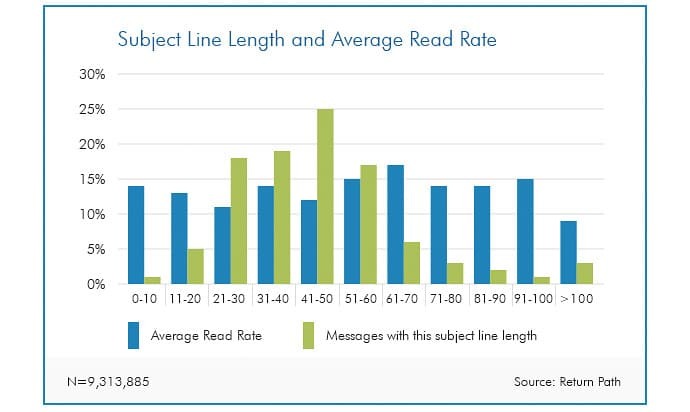
However, your subscribers are unique and may react differently than those included in this study. Perhaps they are reading emails on mobile devices more often or are using older email clients, which show fewer characters in the subject line field.
Consider setting up your next campaign as an A/B test to see what subject line length works best for your audience.
1.6. Email Content
If your email contains multiple pieces of content (like a newsletter, for instance), then testing different pieces of content as the subject line can be a great way to improve your email open rates and learn what kind of content resonates with your audience.
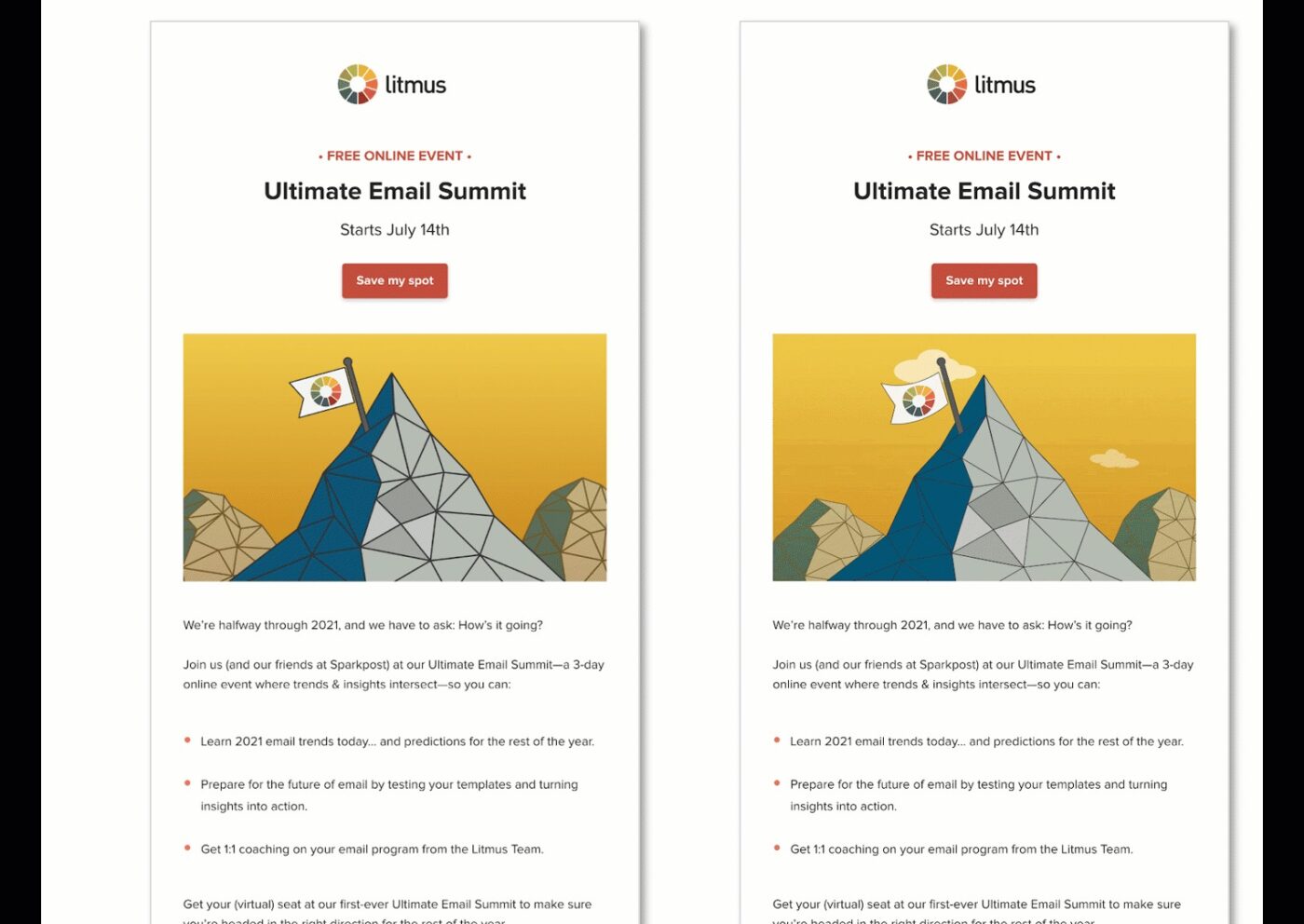
Conclusion
A/B testing is a straightforward yet potent method to enhance your email campaigns.
It simply entails crafting two versions of the same email and determining which one connects better with your subscribers. Regularly conducting these tests enables you to continuously refine and optimize your campaigns, enhancing your open, click-through, and conversion rates in the process. With numerous email applications allowing the swift and effortless setup of these tests, there’s every reason to engage in constant A/B testing

